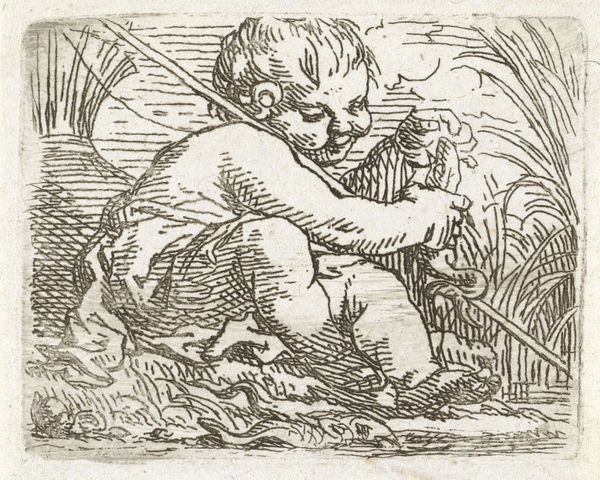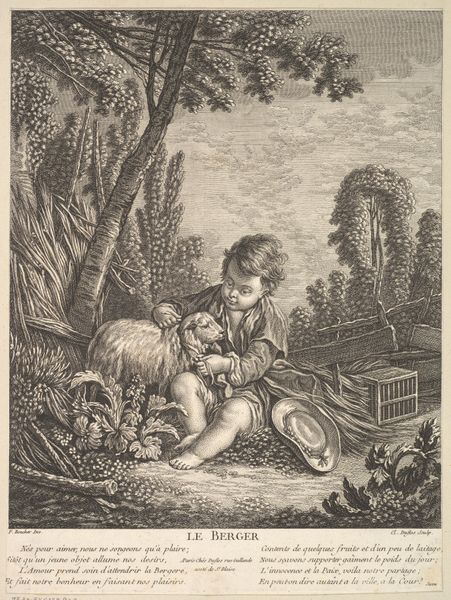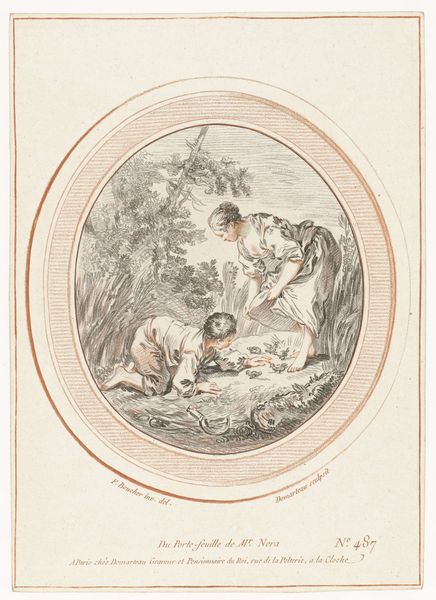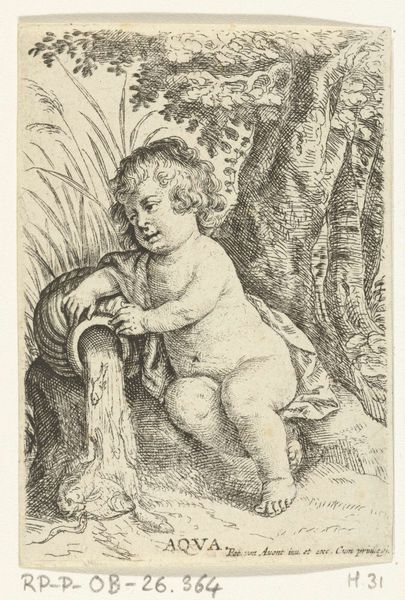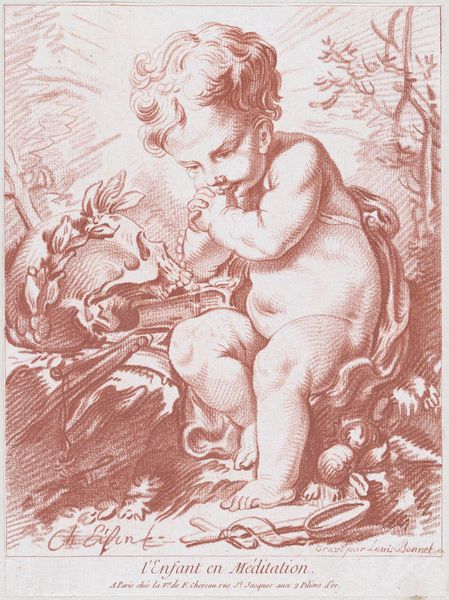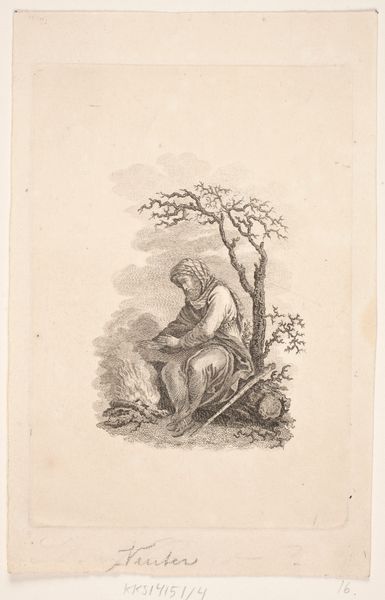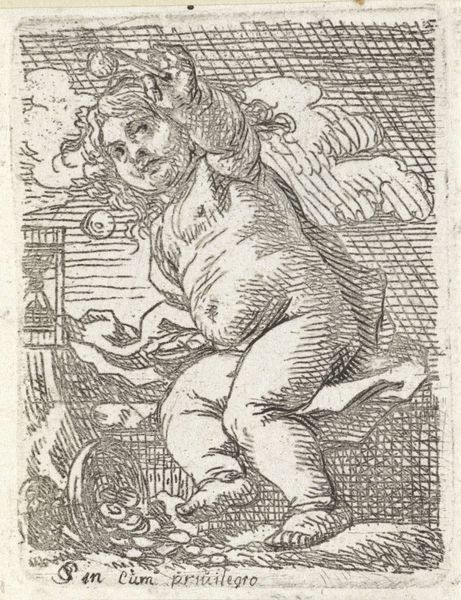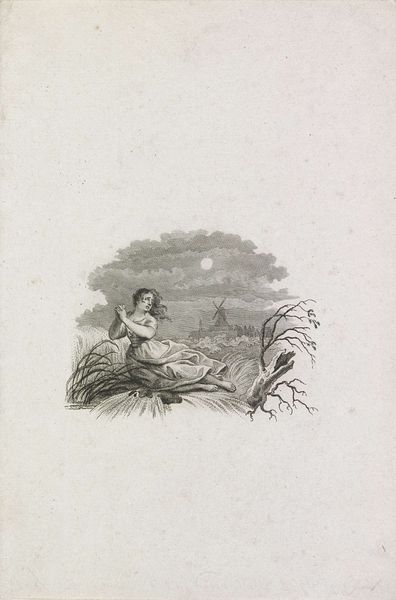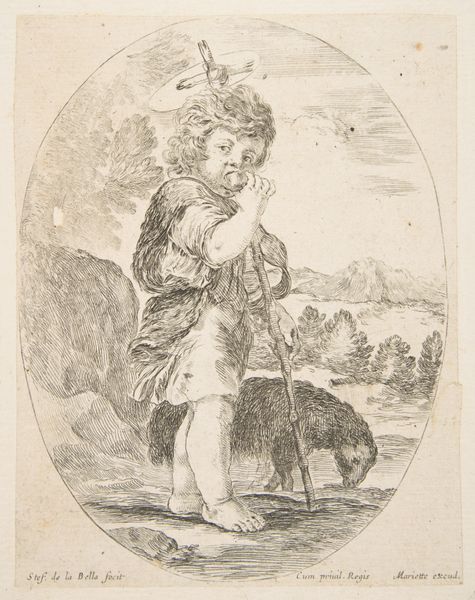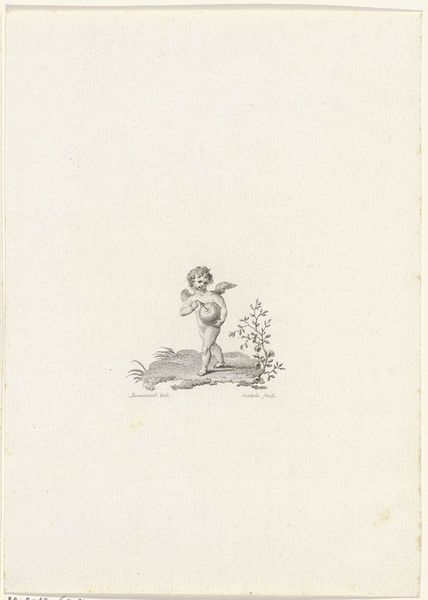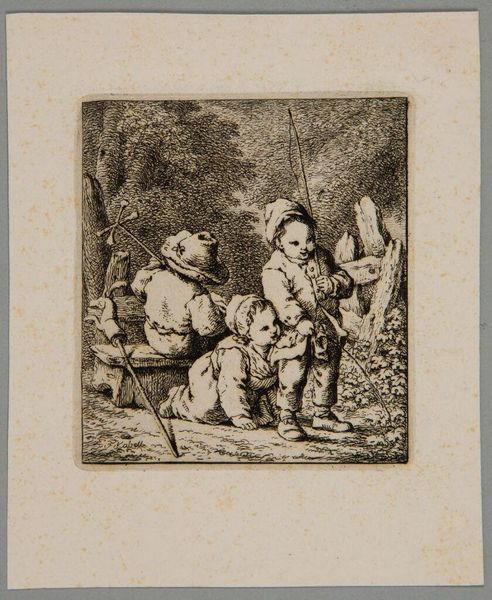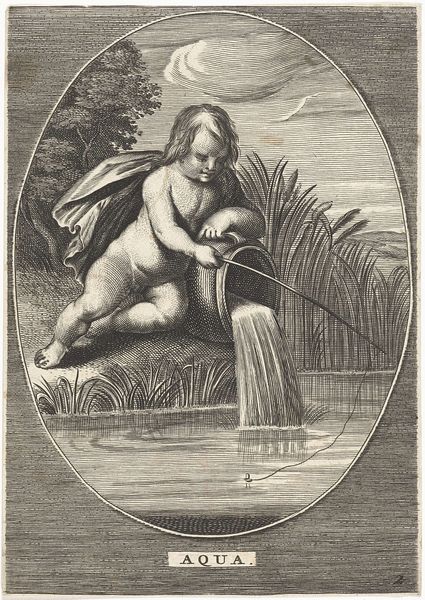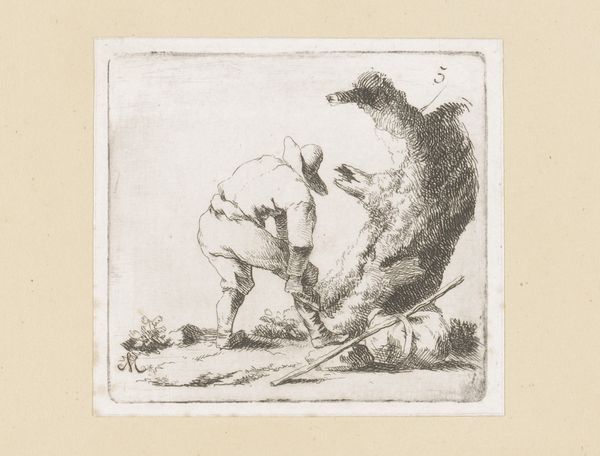
etching
#
baroque
#
etching
#
figuration
#
genre-painting
Dimensions: height 68 mm, width 53 mm
Copyright: Rijks Museum: Open Domain
Editor: Here we have Cornelis Schut's etching, "Putto die een vis van de haak haalt," made sometime between 1618 and 1655. It's a lively little scene, quite rough and energetic in its execution, featuring a cherubic figure wrestling with a fish. What strikes you when you look at this, in terms of the imagery's social context? Curator: The image, like many genre scenes featuring putti from this period, reflects a broader fascination with innocence and childhood in the midst of social and political upheaval. Consider that during this time, genre paintings, particularly those depicting everyday life, were becoming increasingly popular among the emerging middle class. Editor: So, it’s not just a cute image but reflective of the public tastes of the time? Curator: Precisely. This etching, as a relatively accessible form of art, would likely have circulated among a growing segment of society interested in relatable, domestic scenes, even if they were allegorical. Do you notice how the putto is presented almost as a mini-Hercules? What might that signify? Editor: Maybe it suggests that even seemingly innocent or playful actions can have larger, even heroic, implications? Or is that projecting too much? Curator: Not at all. The inclusion of a putto in an action, usually reserved for heroes, serves as a commentary on the era's views on children. Now what do you think about the fact that it’s an etching, a printed format? Editor: Given it’s reproducible, it's less exclusive. Was the Rijksmuseum’s collection as diverse during this era? Did accessibility of such a wide range of demographics impact what they choose to showcase? Curator: Good questions! The availability would affect audiences, broadening appreciation, which then affected how it was being historically represented and subsequently acquired by the Rijksmuseum. We can see how deeply interwoven these institutional choices are. Editor: That gives me a lot to think about, it makes the piece far more meaningful. Curator: Exactly! Always question the artist's motivations and society's reflection.
Comments
No comments
Be the first to comment and join the conversation on the ultimate creative platform.
